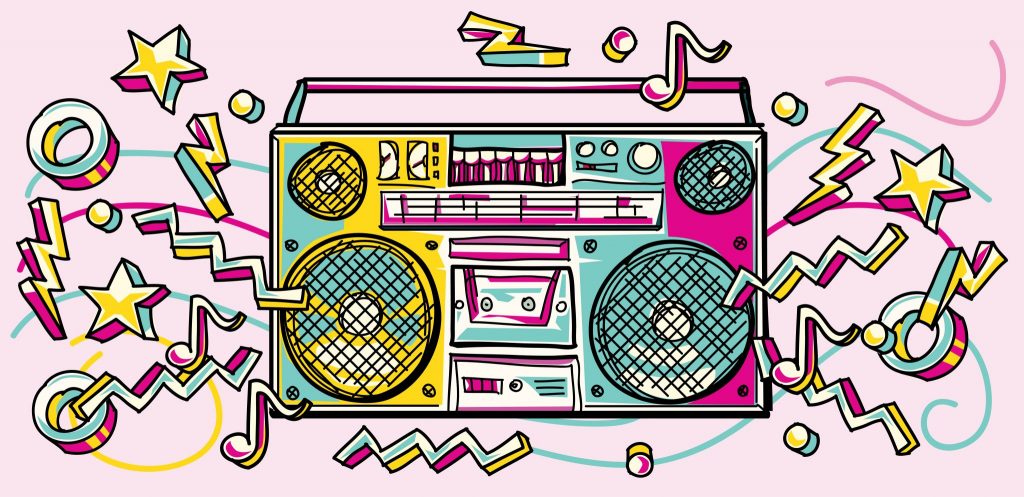I was lucky enough to have really cool teachers at school – you know, the type who taught game theory using the bar scene from A Beautiful Mind, or aspects of US government systems using episodes of The West Wing, or Freud’s idea of the Return of the Repressed using the opening episode of the 2nd series of Buffy the Vampire Slayer. Making a connection between whatever you were learning about and the big TV shows of the day, a classic film, or a national sport would instantly attract the full attention of us pupils and automatically attribute a degree of Awesome to the teacher. Suddenly something we already cared about was relevant to the lesson; so of course, we were going to be more engaged, pay more attention and be more likely to recall that lesson. They were using pop culture in learning.
However, there’s always a risk that, although referencing pop culture can certainly perk up your audience’s ears and make your teaching stand out in their memories, it’s not actually furthering their learning. They might recall your lesson, but do they recall the actual content of the lesson or learning objective? Do they remember the principles of game theory or do they remember Russell Crowe strategizing how to chat up women with his mates? Do they remember the process of a bill through Congress to the President’s desk or do they remember the general fantastic-ness of President Bartlett and co.? Engagement is crucial, but is it the only way in which pop culture can improve our learning?
When used well, pop culture helps your learners feel more engaged and more at home in the learning experience, and it can improve their content recall and understanding.
Getting comfortable
Coming across something familiar and friendly amongst content that we haven’t encountered before or don’t understand is reassuring. Psychologically, it gives you a confidence boost and makes you feel that you’re in the loop. For example, an English literature student watching The School of Life’s YouTube video, What is Inflation?, expecting to be submerged into a world of baffling numbers, would feel excited, and reassured, by a reference to Pride and Prejudice (and specifically Mr Darcy – who wouldn’t be excited?). If you’re expecting to feel excluded and confused by a discipline that you’ve never got on with, recognising something that you know about, even if it’s not a favourite, makes you feel included and open to understanding that discipline.
Using popular culture doesn’t always have to involve an explicit reference or comparison to a particular book, public figure or song. In an Anti-Bribery and Corruption course we created, we conjured popular culture through the setting of the course itself by crafting a film noir aesthetic. The course takes place in a series of darkened, shadowy rooms furnished in an old-fashioned style, in which the learner must identify the potentially incriminating objects around them.
The use of a prolific and well-known film genre makes the learner feel at home in the course; they are inside a story that they recognise. They know the conventions of the story so they know what to expect but they are also, as with any story, intrigued to see it play out. The genre also casts the learner in the role of detective hero and the act of bribery as the amoral criminal act which must be prevented, reinforcing the need for compliance. The use of the film noir genre both engages the learner and makes them feel at ease in a recognisable setting.
Total recall
It is now widely acknowledged that stories act as a basic method of organisation in the human memory. Studies have shown that people asked to memorise a list of objects by weaving them into a narrative recall six to seven times more objects than people who were asked to memorise the same list without creating a story.
Traditionally, stories start with a beginning (‘Once upon a time, in a land far, far away…’), move onto a middle (which usually contains some sort of conflict or problem) and then resolve themselves into an ending (‘… and they all lived happily ever after’). They link and move through information in a coherent chronological way. You remember the beginning of the story because that led to the middle which then led to the end. Delivering learning content in the form of stories, therefore, improves recall because it helps learners to form structural connections in their brains. As long as the learner wasn’t fast asleep and can recall one element of the story/learning, they can recall all, or at least most of, the story/learning.
As it happens, much of popular culture involves stories – books, films, TV shows, even songs or the news. If you use examples of popular culture that involve narrative, you can both boost your learners’ interest and improve their recall and understanding.
For example, teaching the classic Physics equation that most GCSE students have to learn, f=ma (force = mass x acceleration) can be done effectively using The Amazing Spider-Man. Treating the scene of Gwen Stacy’s death as a mini-narrative, learners can see the connections between maths and real life. Without going too much into the maths, this is the story:
Beginning – Green Goblin pushes Gwen off the bridge.
Middle – Gwen falls, obviously at a very high speed. Spider-Man catches her in his web. F=ma tells us that by bringing her high speed to a stop so quickly, Spider-Man and his web exerted a huge force on her body (just as the water would have done if he hadn’t caught her).
End – Gwen dies instantly from the force of the impact of Spider-Man’s web, as indicated in the comic.
The relationship between mass, acceleration and force are easier to remember here because they result in the final, devastating event of the story.
None of this is to suggest that there is anything wrong with using popular culture purely as an engagement tool (although I would personally avoid examples such as The Big Short’s gratuitous use of the beautiful, bathing, beach body-ready Margot Robbie to explain subprime mortgages).
I’ll leave you with the example of Virgin Atlantic’s 2014 safety film Trip. The film is a learning triumph because it makes what customers have seen tens of times over (and think they know about already) new, entertaining, fun and most importantly memorable… and likely to be applied, should the unthinkable happen.





